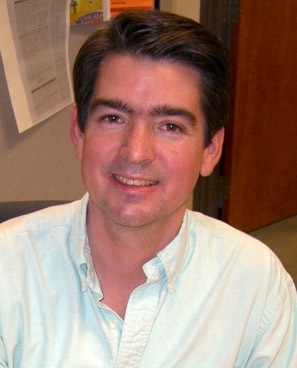
Abstract
Photovoltaics research represents one of the greatest opportunities to impact the climate change and energy security problems that we face today. Over 1.5×10^22 J (15,000 EJ) of solar energy reach Earth everyday, compared to a daily energy consumption of approximately 1.3 EJ by human activity. The potential for new 4-, 5-, and 6-junction solar cell architectures, capable of greater than 70% efficiency in theory, to reach practical efficiencies over 50% is highly leveraging for the economics of concentrator photovoltaic (CPV) systems. The theoretical performance of such next-generation cells, and experimental results for 3- and 4-junction CPV cells, are examined in this talk to evaluate their impact for real-world solar electricity generation. Semiconductor device physics equations are formulated in terms of the band gap-voltage offset Woc ≡ (Eg / q) – Voc to give a clearer physical understanding and more general analysis of the multiple subcell band gaps in multijunction cells. Band gap-voltage offset is shown experimentally to be largely independent of band gap Eg for a wide range of metamorphic and lattice-matched semiconductors from 0.67 to 2.1 eV. Its theoretical Eg dependence is calculated from that of the radiative recombination coefficient, and at a more fundamental level using the Shockley-Queisser detailed balance model, bearing out experimental observations. First-principle efficiency limits are analyzed for some of the main candidates for high-efficiency multijunction terrestrial concentrator cells. Energy production of 4-, 5-, and 6-junction CPV cells, calculated for changing air mass and spectrum over the course of the day, is found to be significantly greater than for conventional 3-junction cells. The spectral sensitivity of these next-generation cell designs is fairly low, and is outweighed by their higher efficiency. Both upright metamorphic and lattice-matched GaInP/GaInAs/Ge 3-junction cells have reached an independently confirmed efficiency of 41.6%. Light I-V and quantum efficiency measurements of these high-efficiency concentrator solar cells and of next-generation 4-junction CPV cells are presented.
Biography
Dr. Richard King is Principal Scientist and Technical Fellow responsible for Photovoltaic Cell R&D at Spectrolab, Inc. His research on photovoltaics over the last 25 years has explored high-efficiency solar cells in a number of semiconductor materials systems, from silicon, to the GaInP, GaInAs, and germanium subcells in III-V multijunction cells. Dr. King's solar cell research led the emergence of III-V multijunction concentrator cells as the photovoltaic technology with the highest and most rapidly rising efficiency, helping to enable the recent growth of the concentrator photovoltaics industry, which now primarily uses this type of solar cell.
Dr. King led Spectrolab's development of III-V multijunction cell structures resulting in new heights in terrestrial concentrator solar cell efficiencies, recognized with R&D 100 awards in 2001 and 2007, and a Scientific American 50 award in 2002. In 2006, this work led to a record 40.7%-efficient metamorphic 3-junction terrestrial concentrator cell, the first solar cell of any type to reach over 40% efficiency. Dr. King and his research team have since produced 41.6%-efficient 3-junction GaInP/GaInAs/Ge cells, with both metamorphic and lattice-matched designs, another step in a long series of record solar cell efficiencies. Dr. King is the recipient of the 2010 William R. Cherry Award, given for "outstanding contributions to photovoltaic science and technology."